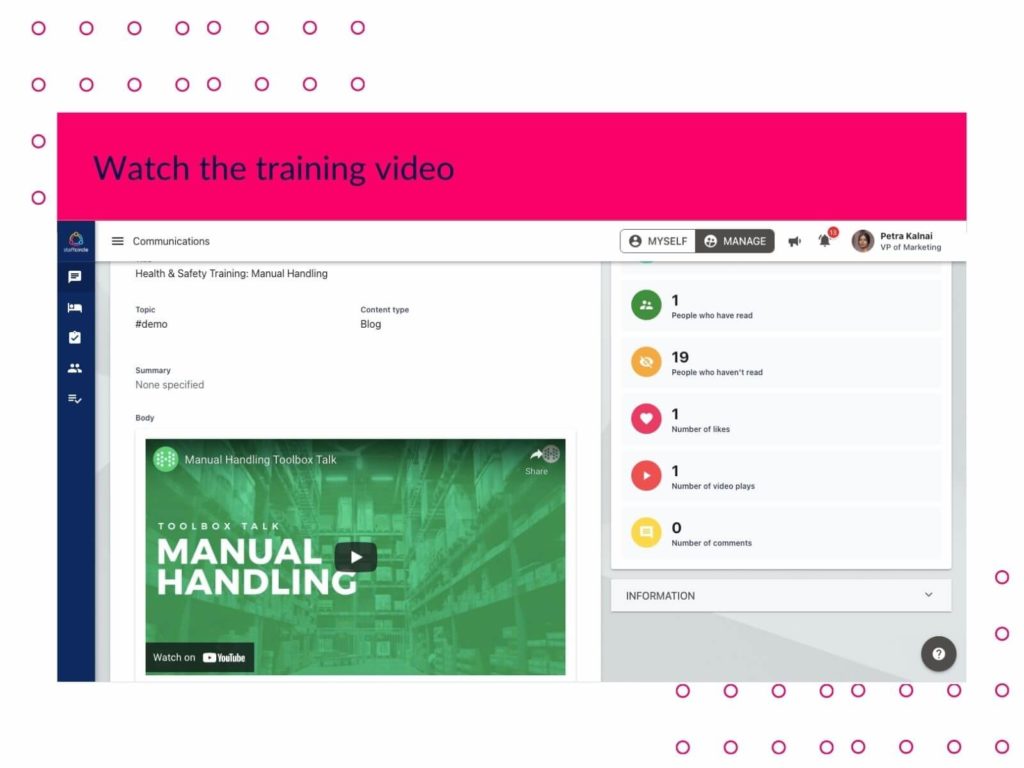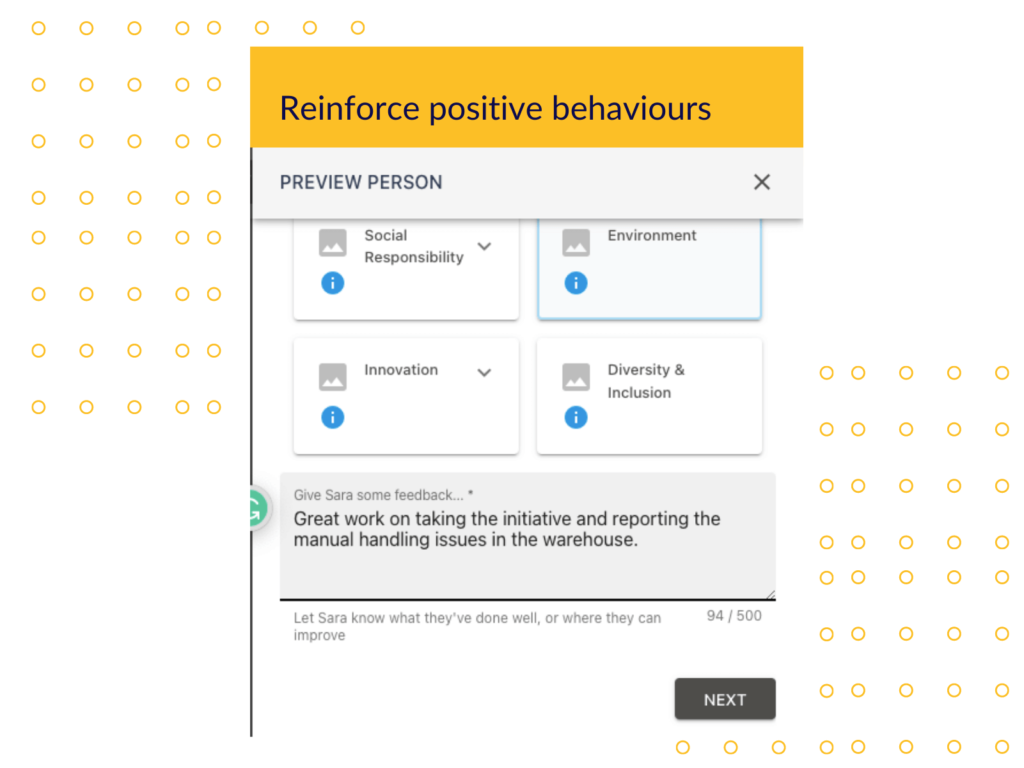The United Nations advise building an effective social dialogue, but changing your health & safety culture can be daunting. Here we have pulled together 5 tips that will help you build your organisation’s health & safety approach.
Tip 1: Communicate
One of the best ways to keep your employees safe and build a positive health and safety culture is with regular, transparent communications.
These can be done in person or remotely via newsfeeds or a company intranet (e.g. training videos). You can create an e-mail outreach plan, however, that has its challenges when it comes to visibility on employee engagement.
Taking a social approach and letting your employees lead these conversations is likely to result in their buy-in. A central channel or communications hub can ensure that everyone knows about any new policies that your company may publish.
Depending on the type of health and safety communication update you may only need to alert a select group of employees, an entire office, or a multi-location business. By creating pre-defined distribution groups, you can be very targeted in your approach. With a multi-channel communication system, you can reach your audience on their preferred communication platform, whether that’s text messages or inApp notifications.

Effective multi-channel comms systems, like StaffCircle let you see who has read or engaged with your communication. This includes training videos, policies or any other health and safety documents. This not only gives you visibility but also helps you identify disengaged or poor response behaviour in employees.
Tip 2: Obtain employee feedback
Establishing an open two-way communication stream results in active participation.
It is important that the voices of all employees are heard when making changes, including brand new H&S guidelines or updates to existing ones. Involve all types of employees, including full-time and part-time staff alongside shift workers to get the most complete results.
It’s vital to ensure a safe working environment for all employees at your company. Using StaffCircle, you can run a company-wide survey to identify potential hazards before they become issues. Doing this activity regularly allows you to stay up to date on how well policies/guidelines have been adhered to, and how your employees feel about health and safety initiatives.

You’ll be surprised at how much more motivated your team is when they know their feedback had an impact. Once you’ve analysed the data, make sure to share these results with everyone to keep up the momentum.
Tip 3: Provide Training
Training is essential for reducing the risk of workplace accidents. Providing employees with effective health and safety training will help them know how to work safely, without putting themselves or others at risk.

Keeping on track of employee training and certifications across the board is key to maintaining a safe workplace. Use your performance management software to add training goals per employee or department. You can track their progress to ensure they are completed on time and to a high standard.
Tip 4: Make the reporting process easy
Complicated and complex reporting processes can deter employees from reporting incidents of safety hazards. A simple and straightforward approach to reporting can have the opposite effect. Streamlining your reporting process is one of the easiest and most impactful actions you can take to create a positive health and safety culture.

Online forms are simple to access, complete and review so are most recommended. However, if you use paper forms and make it easy to upload (for example by taking a photo) you can create a readily auditable process that cuts admin time for those responsible for health and safety monitoring.
Another benefit of a few clicks online approach is that it’s available 24/7. This allows your employees to report and record anything health and safety-related at their first opportunity, even if it is after working hours.
Tip 5: Reinforce positive behaviours
To build a positive safety culture, you should reward employees who report hazards or concerns correctly. Monetary rewards are widely debated due to the risks of over-reporting. Instead, consider building reporting into your cultural strategy, in the form of ‘thank yous’, award badges and peer-to-peer feedback.

A safe work environment will be much easier to maintain when workers know their voice is respected and their contribution is acknowledged and appreciated.
The bottom line
Implementing these tips can help to ensure that you build a positive health and safety culture which is a key initiative for most businesses.





